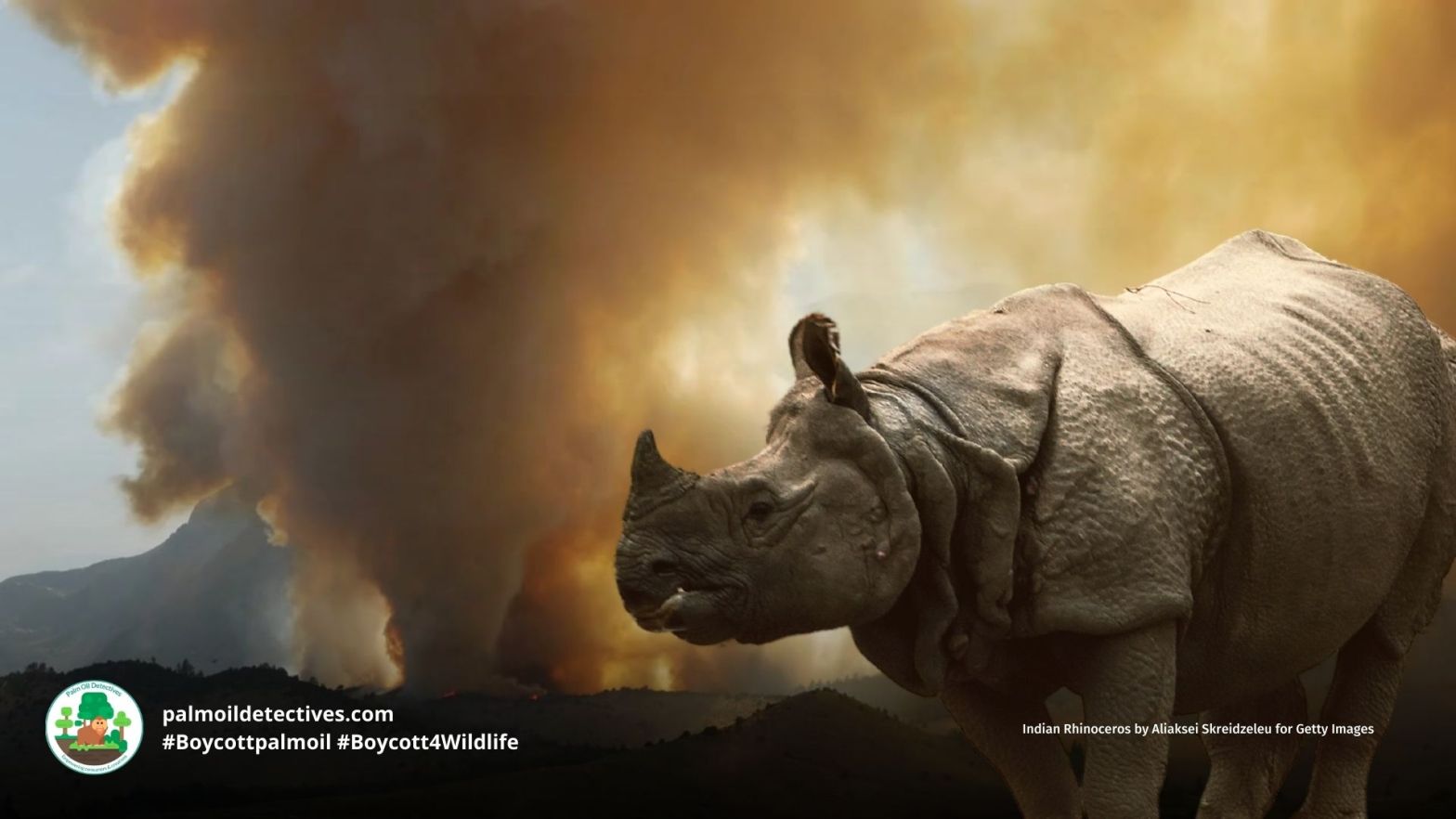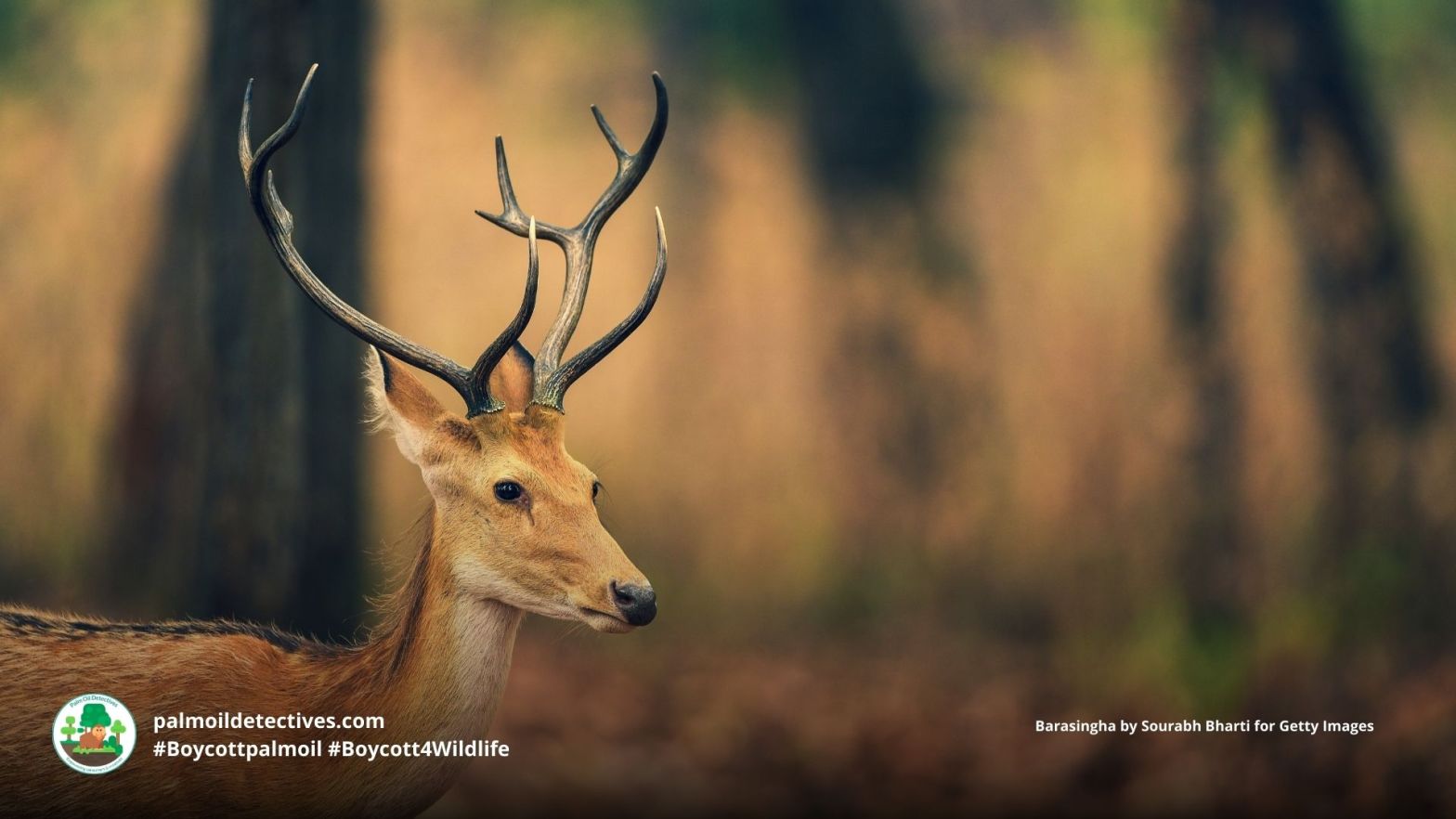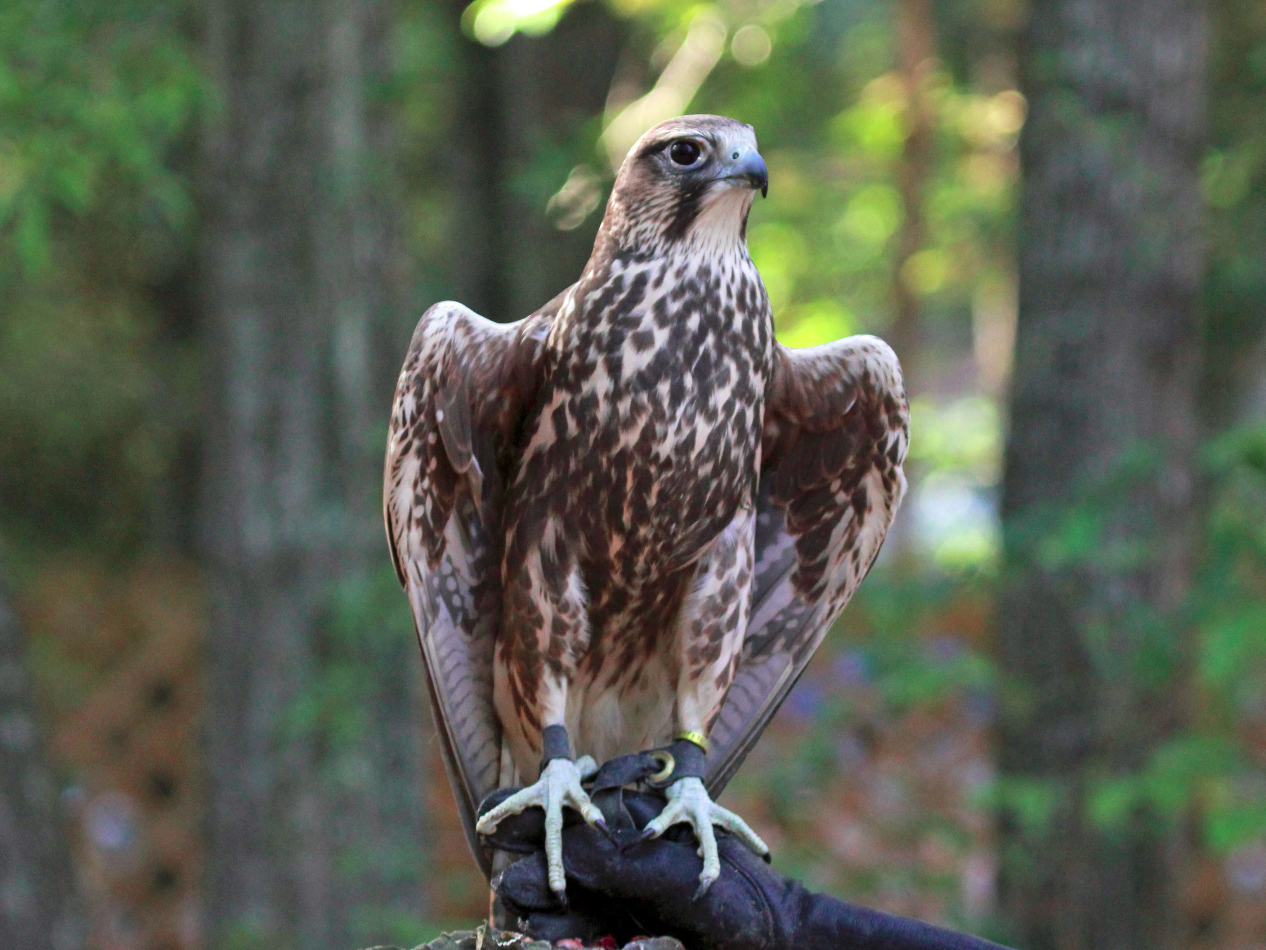The largest of the three rhino species in Asia, the Indian Rhino has a distinctive and unique armour-plated look which lends them a fairytale quality that has captivated admirers for aeons. Although Indian rhino numbers have climbed over the past decades due to conservation, they are under imminent threat from the expansion of palm oil deforestation in the Assam region of India. A protected national park there is earmarked for destruction. Use your wallet as a weapon every time you shop and #Boycottpalmoil #Boycott4Wildlife
Tag Archives: Nepal
Barasingha Cervus duvauceli
Barasinghas (Cervus duvauceli) also known as Swamp Deers, are instantly recognisable for their enormous handsome antlers. They can have as many as 12 antlers and their namesake Barasinghas means ’12 antlered deer’ in Hindi. They are now one of the most endangered deer species in the world due to habitat fragmentation for palm oil and beef. The only remaining population live in protected sanctuaries in India and Nepal. They face many threats, including meat and palm oil deforestation and are listed as vulnerable on IUCN Red List.
Protect them each time you shop by boycotting meat and palm oil in the supermarket.
Assam Rabbit (Hispid Hare) Caprolagus hispidus
Shy, solitary and wary Hispid hares are most active during dawn and dusk. They often take shelter from predation in tall grasses and the burrows of other animals. They are endangered by multiple human-related threats including palm oil deforestation in the Assam region of India and they also hold to survival in Bhutan and Nepal.
Their main threats are habitat loss to palm oil as well as climate change related extreme weather. Protect them each time you shop by boycotting meat and palm oil in the supermarket.
Dhole Canis Cuon alpinus
Fiercely protective, elusive and beautiful Dholes are an ancient species of wild dog that diverged from other dog species millions of years ago. Dholes are also known as Asiatic Wild Dogs, Indian Wild Dogs, Red Wolves and Mountain Wolves. Once found across the Russian Steppe, China, the Middle East and northern Asia their range has been fractured and reduced dramatically by human-related pressures and threats. They are now Endangered on IUCN Red List.
The Dhole have a striking and intense appearance with thick and dense fur ranging from pale gold, to yellow to dark reddish-brown and grey-brown. Their underside is typically a paler colour of creamy white. They differ from other dog species in that they have a thicker muzzle, one fewer molar on each side of their jaws and additional teats. They are average sized dogs and typically weigh between 10 – 25kg with males being about 4.5kg heavier than females.
Pygmy Hog Porcula salvania
Pygmy hogs are only found in the lush and dense grasslands of Manas National Park, a small protected region in the shadows of the Himalayan mountains. These shy tiny wild pigs are the smallest pigs in the world and also the most endangered, threatened by habitat loss for palm oil and meat agriculture. Help them to survive each time you shop and #BeVegan #Boycottpalmoil and #Boycott4Wildlife
Saker Falcon Falco cherrug
The Sager Falcon is a majestic and powerful birds of prey that have a wide range throughout much of Southern Europe, the Middle East and parts of Africa. Their plumage ranges from chocolate brown in colour to a pale sandy with brown bars or streaks and can be snow white and off-white.
Wild Water Buffalo Bubalus arnee
Wild Water Buffalo Bubalus arnee Endangered India, Nepal, all South East Asia The Wild Water Buffalo is very dependent on the availability of water and historically their preferred habitats were low-lying alluvial grasslands including bheels (ox-bow lakes and similar pools left by changing river courses) and their surrounds; river banks, and chaporis (small sandy islandsContinue reading “Wild Water Buffalo Bubalus arnee”
Elongated Tortoise Indotestudo elongata
Elongated Tortoise Indotestudo elongata Critically Endangered Bangladesh; Bhutan; Cambodia; India; Laos; Malaysia; Myanmar; Nepal; Thailand; Vietnam Elongated Tortoises inhabit primarily deciduous forest types (Sal, Dry Dipterocarp, Mixed Deciduous forests) with open, broken canopy allowing sufficient light for a moderate to very dense undergrowth of grasses and herbs; during the dry, leafless season animals may retreatContinue reading “Elongated Tortoise Indotestudo elongata”








